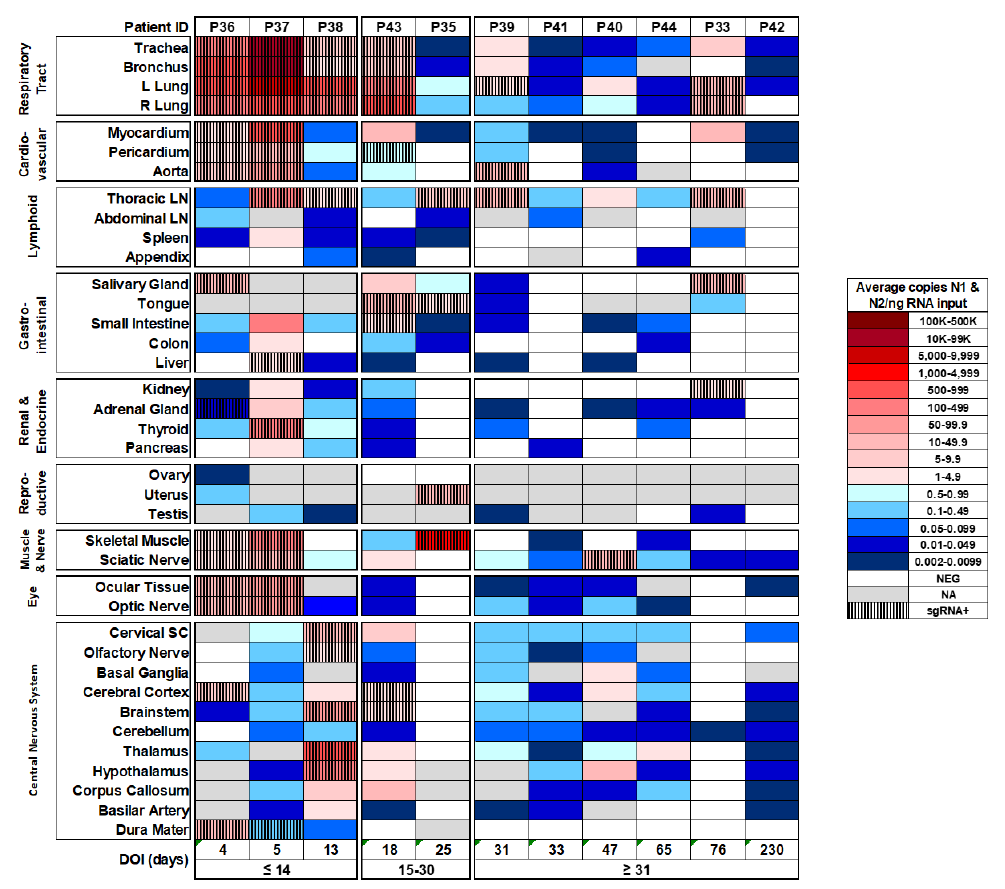Infection with severe acute respiratory syndrome coronavirus 2 (SARS-CoV-2), the causative agent of coronavirus disease 2019 (COVID-19), has well described pulmonary and extrapulmonary manifestations1-3, including multiorgan failure and shock among severe and fatal cases. Some survivors experience Post-Acute Sequelae of SARS-CoV-2 (PASC) – also known as Long COVID—with cardiovascular, pulmonary, and neurological manifestations with or without functional impairment4-5. While autopsy studies of fatal COVID-19 cases support the ability of SARS-CoV-2 to infect multiple organs3,7-12, extra-pulmonary organs often lack histopathological evidence of direct virally-mediated injury or inflammation10-91 14. The paradox of extra-pulmonary infection without injury or inflammation raises many pathogen- and host-related questions.
These questions include but are not limited to: What is the burden of infection within versus outside of the respiratory tract? What cell types are infected across extra-pulmonary tissues, and do they support SARS-CoV-2 infection and replication? In the absence of cellular injury and inflammation in extra-pulmonary tissues, does SARS-CoV-2 persist, and if so, over what interval? Does SARS-CoV-2 evolve as it spreads to and persists in different anatomical compartments?

